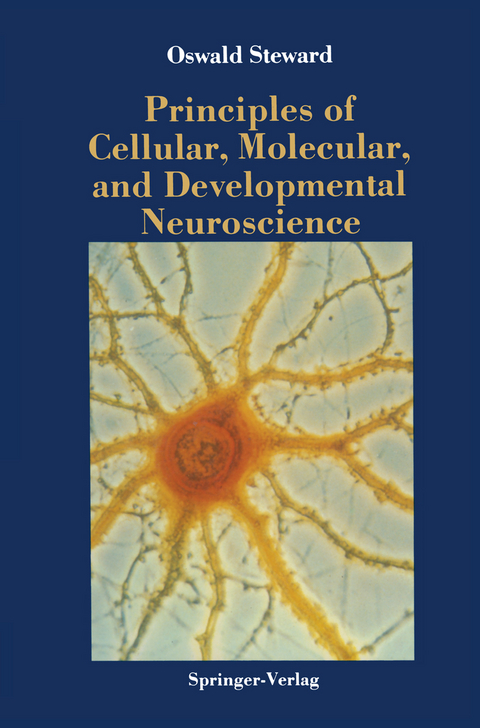
Principles of Cellular, Molecular, and Developmental Neuroscience
Springer-Verlag New York Inc.
978-1-4612-8148-1 (ISBN)
1 Cell Biology of Neurons.- I. Neuronal Cell Structure and Its Relation to Function.- II. Molecular Anatomy of Neurons, Intracellular Transport, and Gene Expression.- 2 Cell Biology of Glia.- Glial Cells of the CNS.- Glial Cells of the Peripheral Nervous System (PNS).- Functional Roles of Glial Cells.- Functions of Microglia.- Gene Expression in Glial Cells.- Conclusion.- Supplemental Reading.- 3 Interneuronal Communication I: Neurotransmitters.- Nonpeptide Neurotransmitters.- Neuropeptides.- Cellular Mechanisms of Chemical Neurotransmission.- Delivery of Neurotransmitters or Their Enzymes and Storage Within Terminals.- Release (Stimulus-Coupled Secretion).- Inactivation or Degradation of Neurotransmitters.- Supplemental Reading.- 4 Interneuronal Communication II: Neurotransmitter Receptors and Second Messenger Systems.- Ionophore-Linked Receptors.- GABA and Glycine Receptors.- Receptors for Excitatory Amino Acids.- Second Messenger-Linked Receptors.- Functional Significance of Receptor-Mediated Second Messenger Systems.- Supplemental Reading.- 5 Histogenesis of the Nervous System.- The Formation of the Nervous System.- Proliferation and Migration of Neurons and Glia.- Role of Cell Adhesion Molecules in Neural Histogenesis.- Programmed Cell Death in the Nervous System.- Supplemental Reading.- 6 The Formation of Neural Connections I: Axon Growth and Guidance.- Elaboration of Axons and-Dendrites.- Axonal Overproliferation and Withdrawal.- Supplemental Reading.- 7 The Formation of Neural Connections II: Dendritic Development and the Establishment of Synaptic Connections.- The Development of Dendrites.- Specificity in the Formation of Topographically Ordered Projections.- Rearrangement of Synaptic Connections During Development.- Construction of Synaptic Connections.- Transsynaptic Regulation of Neuronal Differentiation.- Supplemental Reading.- 8 Nervous System Regeneration and Repair Following Injury.- Regressive Phenomena Following Injury.- Adaptive Changes in Response to Trauma.- Reactive Growth of Axons and Synapses.- Transplants and Grafts.- Supplemental Reading.
| Zusatzinfo | XI, 257 p. |
|---|---|
| Verlagsort | New York, NY |
| Sprache | englisch |
| Maße | 155 x 235 mm |
| Themenwelt | Medizin / Pharmazie ► Medizinische Fachgebiete ► Neurologie |
| Studium ► 2. Studienabschnitt (Klinik) ► Pathologie | |
| Naturwissenschaften ► Biologie ► Genetik / Molekularbiologie | |
| Naturwissenschaften ► Biologie ► Humanbiologie | |
| Naturwissenschaften ► Biologie ► Zellbiologie | |
| Naturwissenschaften ► Biologie ► Zoologie | |
| ISBN-10 | 1-4612-8148-2 / 1461281482 |
| ISBN-13 | 978-1-4612-8148-1 / 9781461281481 |
| Zustand | Neuware |
| Haben Sie eine Frage zum Produkt? |
aus dem Bereich


